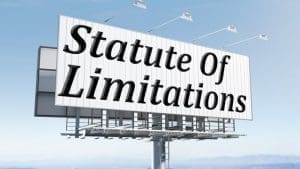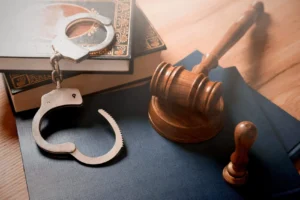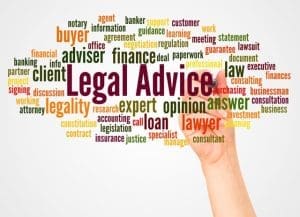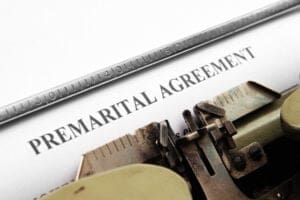Steps After a Slip and Fall Injury: A Comprehensive Legal Guide
Individuals who experience slip and fall accidents frequently ask, “What immediate steps should I take after sustaining injuries from a fall on someone else’s property?” The answer requires understanding both urgent safety measures and critical legal preservation actions that can significantly impact your ability to seek compensation. Unlike minor mishaps, slip and fall injuries often involve complex premises liability laws that vary substantially across jurisdictions, making prompt and proper action essential for protecting your legal rights.
The aftermath of a slip and fall accident creates a narrow window where crucial evidence can be preserved or permanently lost. Property owners and their insurance companies understand this timeline intimately, often moving quickly to minimize their exposure. Understanding the proper sequence of actions following such an incident can mean the difference between a successful claim and a missed opportunity for fair compensation.
What Should Be Your First Priority After a Slip and Fall Accident?
Medical treatment represents the most critical immediate step following any slip and fall incident. Even seemingly minor falls can result in serious injuries that may not manifest symptoms immediately. Head trauma, spinal injuries, and internal bleeding can present delayed symptoms that require professional medical evaluation to detect.
Seeking immediate medical attention serves dual purposes in slip and fall cases. First, it ensures your health and safety receive appropriate care. Second, it creates an official medical record documenting your injuries and their timing in relation to the accident. This documentation becomes crucial evidence when establishing the connection between the hazardous condition and your injuries.
Emergency room visits or urgent care consultations provide timestamped medical records that insurance companies and opposing counsel cannot dispute. These records establish a clear medical timeline that prevents defendants from arguing that injuries occurred elsewhere or at different times.
How Does Property Owner Liability Work in Slip and Fall Cases?
Property owner negligence forms the foundation of most slip and fall claims under premises liability law. Property owners owe visitors a duty of care that varies depending on the visitor’s legal status and the jurisdiction’s specific laws. This duty typically includes maintaining safe conditions and warning visitors of known hazards.
The legal concept of constructive knowledge plays a significant role in these cases. Property owners may be held liable for hazards they should have known about, even if they had no actual knowledge of the dangerous condition. Courts often examine whether the hazard existed long enough that reasonable inspection would have discovered it.
Different states apply varying standards for establishing property owner liability. Some jurisdictions require proof of actual notice, while others allow claims based on constructive notice. Understanding your state’s specific requirements becomes essential for building a successful case.
What Evidence Should You Preserve Immediately After the Accident?
Documentation of the accident scene represents one of the most time-sensitive aspects of slip and fall cases. Physical conditions change rapidly, and property owners often address hazards quickly after accidents occur. Preserving evidence requires immediate action while conditions remain unchanged.
Photographic evidence serves as the cornerstone of most successful slip and fall claims. Wide-angle shots showing the entire area provide context, while close-up images capture specific hazards. Lighting conditions, weather factors, and any warning signs or lack thereof should be documented thoroughly.
The clothing and footwear worn during the accident require careful preservation. These items may contain evidence of the fall’s severity or demonstrate the absence of contributory factors. Avoid washing or cleaning these items, as they may serve as crucial evidence during litigation.
How Do State Laws Affect Slip and Fall Claims?
State-specific regulations create varying legal landscapes for slip and fall claims across the United States. Some states follow traditional negligence principles, while others have adopted modified comparative fault systems that can significantly impact recovery amounts.
States like New York, Florida, and Virginia require plaintiffs to prove that property owners had actual or constructive knowledge of dangerous conditions. This knowledge requirement can be challenging to establish without thorough investigation and evidence collection. Other states, including California, apply broader negligence standards that may be more favorable to injured parties.
Statute of limitations varies significantly by state, creating urgent deadlines for filing claims. Some states provide only two years from the accident date, while others allow up to six years. Missouri, for example, provides five years for slip and fall claims, but claims against municipal entities require 90-day notice periods.
What Role Does Comparative Negligence Play in These Cases?
Comparative negligence doctrines can substantially reduce or eliminate recovery in slip and fall cases. These legal principles examine the injured party’s actions to determine whether they contributed to the accident through their own negligence.
Common comparative negligence arguments include distracted walking, failure to observe obvious hazards, or ignoring posted warnings. For instance, if a plaintiff was using a mobile phone while walking and failed to notice a clearly visible hazard, courts might assign partial responsibility to the injured party.
Different states apply varying comparative negligence standards. Pure comparative negligence states allow recovery even when the plaintiff bears majority responsibility, while modified comparative negligence states bar recovery if the plaintiff is 50% or more at fault.
When Should You Report the Accident to Property Owners?
Incident reporting requirements vary depending on the location and type of property involved. Commercial establishments typically maintain formal accident reporting procedures, while residential properties may have different notification requirements.
Business managers should be notified immediately when accidents occur on commercial premises. Request written incident reports and obtain copies before leaving the property. These reports often contain crucial admissions or acknowledgments that support your claim.
Government property accidents may require special notice procedures with strict deadlines. Municipal liability claims often require formal notice within 90 days of the accident, making immediate reporting essential for preserving legal rights.
What Information Should You Gather About Witnesses?
Witness statements provide independent verification of accident circumstances and can strengthen your claim significantly. Witnesses may observe factors that you missed during the trauma of the accident, such as previous incidents or employee knowledge of hazards.
Contact information for all witnesses should be collected immediately. Names, phone numbers, email addresses, and brief statements about what they observed create a foundation for future testimony. Witnesses may become unavailable over time, making immediate contact essential.
Employee witnesses deserve special attention, as they may have knowledge of previous incidents, maintenance procedures, or management awareness of hazards. Their testimony can establish constructive notice and demonstrate patterns of negligence.
How Do Insurance Companies Investigate Slip and Fall Claims?
Insurance company investigations begin immediately after claims are reported, often within hours of the accident. Insurance adjusters understand the importance of prompt investigation and may attempt to minimize evidence or obtain statements that limit liability.
Professional investigators employed by insurance companies photograph accident scenes, interview witnesses, and review surveillance footage. They may also examine maintenance records, employee training documentation, and previous incident reports to assess liability exposure.
Understanding insurance company tactics helps injured parties protect their interests. Avoid giving recorded statements without legal counsel, as these statements may be used to minimize or deny claims later in the process.
What Medical Documentation Strengthens Your Case?
Medical record preservation extends beyond initial treatment to include all follow-up care, rehabilitation services, and ongoing treatment needs. Complete medical documentation demonstrates the full extent of injuries and their impact on your life.
Diagnostic imaging, including X-rays, MRIs, and CT scans, provides objective evidence of injuries that cannot be disputed. These records establish the severity of injuries and their connection to the accident through medical professional opinions.
Treatment compliance becomes crucial for maintaining claim credibility. Following prescribed treatment plans and attending all appointments demonstrates the seriousness of your injuries and prevents arguments about failure to mitigate damages.
How Do Settlement Negotiations Work in Slip and Fall Cases?
Settlement negotiations typically begin after medical treatment reaches maximum medical improvement or when the full extent of injuries becomes clear. Insurance companies prefer settlements to avoid the uncertainty and expense of trial proceedings.
Initial settlement offers rarely reflect the full value of claims. Insurance companies expect negotiations and often make low initial offers to test claimants’ resolve and knowledge of their cases’ true value. Understanding this dynamic prevents acceptance of inadequate offers.
Factors influencing settlement values include medical expenses, lost wages, pain and suffering, and future treatment needs. Severe injuries resulting in permanent disability or disfigurement command higher settlements than minor injuries with complete recovery.
What Are the Most Common Mistakes That Damage Slip and Fall Claims?
Delayed medical treatment represents one of the most damaging mistakes in slip and fall cases. Waiting to seek medical attention allows insurance companies to argue that injuries occurred elsewhere or were not serious enough to require immediate care.
Social media posts about the accident or subsequent activities can severely damage claims. Insurance companies routinely monitor social media accounts for content that contradicts injury claims or suggests activities inconsistent with reported limitations.
Failing to preserve evidence or waiting too long to investigate accident scenes allows crucial evidence to disappear. Property owners may repair hazards, weather conditions may change, and witnesses may become unavailable if action is delayed.
How Do Large Settlement Cases Provide Insight Into Claim Values?
Major settlement awards demonstrate the potential value of serious slip and fall claims while illustrating the factors that drive high compensation amounts. These cases often involve catastrophic injuries with permanent consequences requiring extensive medical care and life-long limitations.
A University of Pennsylvania medical student received an $18 million settlement after falling into an uncovered manhole and sustaining spinal injuries. The case illustrates how clear liability combined with severe injuries can result in substantial compensation.
Construction workers have received similar large awards for falls from defective scaffolding, with one New York case resulting in $18 million for the injured worker and $3 million for his spouse. These cases demonstrate how workplace safety violations can lead to significant liability exposure.
What Role Does Legal Representation Play in Slip and Fall Cases?
Experienced legal counsel provides crucial advantages in slip and fall cases, particularly given the complexity of premises liability law and the resources available to property owners and insurance companies. Attorneys understand evidence preservation requirements, investigation techniques, and negotiation strategies that maximize claim values.
Legal representation becomes particularly important when dealing with insurance company tactics designed to minimize liability. Attorneys can prevent clients from making statements or taking actions that damage their claims while ensuring proper evidence collection and preservation.
The timing of legal consultation affects case outcomes significantly. Early attorney involvement allows for proper evidence preservation, witness interviews, and strategic claim development that may not be possible if legal counsel is retained later in the process.
How Do Municipal and Government Entity Claims Differ?
Government liability claims involve unique procedural requirements and shorter deadlines that can trap unwary claimants. Most states require formal notice to government entities within 90 days of accidents, with specific information requirements that must be met precisely.
Sovereign immunity doctrines limit government liability in many jurisdictions, requiring claimants to prove that accidents occurred during proprietary rather than governmental functions. Understanding these distinctions requires specialized legal knowledge.
Claims against government entities often involve different damage limitations and procedural requirements than private party claims. Some states cap damages against government entities or require specific approval processes for settlements above certain amounts.
What Future Trends Are Shaping Slip and Fall Law?
Technology integration increasingly impacts slip and fall cases through surveillance systems, mobile device data, and digital evidence preservation. Courts are adapting to handle new forms of evidence while maintaining traditional legal principles.
Weather monitoring systems and digital maintenance records provide new sources of evidence for establishing liability and proving knowledge of hazardous conditions. These technological advances may shift the evidentiary landscape in favor of injured parties.
Building codes and safety standards continue evolving to address known hazards and incorporate new safety technologies. These changes may create additional liability theories while establishing higher standards of care for property owners.
Conclusion: Protecting Your Rights Through Principled Action
The steps taken immediately following a slip and fall accident determine whether injured parties can successfully pursue compensation for their injuries. Understanding these requirements and acting promptly protects legal rights while preserving crucial evidence that may disappear over time.
Personal responsibility and proper preparation provide the foundation for successful slip and fall claims. Seeking immediate medical attention, documenting accident scenes, and preserving evidence create the building blocks for strong legal cases while demonstrating the seriousness of injuries sustained.
The legal system provides mechanisms for holding property owners accountable for maintaining safe conditions, but these protections only benefit those who understand and follow proper procedures. Knowledge of your rights and prompt action to preserve them serve as the cornerstone of effective legal representation.
Constitutional principles of due process and equal protection ensure that all individuals have access to legal remedies when injured through others’ negligence. These fundamental rights require active protection through proper evidence preservation and timely legal action.
The conservative legal principle of individual responsibility applies equally to both property owners and visitors. Property owners must maintain safe conditions and warn of known hazards, while visitors must exercise reasonable care for their own safety. Understanding these mutual obligations creates realistic expectations for legal outcomes.
Fair compensation for injuries requires proof of both liability and damages through credible evidence and professional presentation. The legal system provides these opportunities for those who understand requirements and act accordingly. Proper preparation and principled action serve as the foundation for successful slip and fall claims while upholding the rule of law that protects all citizens’ rights.
Sources:
- Oxford Academic Book Chapter on Legal Topics
- Sage Journals Human Factors Research Study
- BMJ Injury Prevention Research Article
- BMJ Injury Prevention Conference Abstract
- Frontiers in Sports Science Fall Risk Study
- NCBI PMC Fall Prevention Research
- NCBI PMC Injury Prevention Study
- NCBI PMC Fall Risk Assessment Research
- American Bar Association Construction Industry Fall Analysis
- MDPI Clinical Medicine Fall Study


















